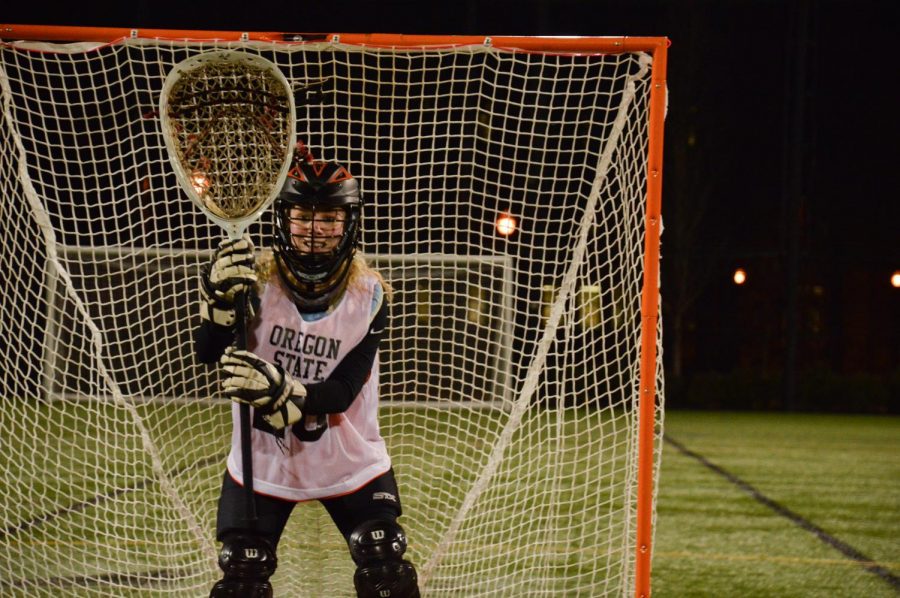Club sport participants balance athletics, academics
February 27, 2017
Although no scholarships are awarded, athletes dedicate time, effort to their sport
Oregon State University Division-1 athletes often make the headlines of newspapers, garnering much attention. However, there are around 1,650 OSU club sport athletes who are also dedicating hours to their sports.
Although club-sport student athletes are not on scholarship, they still face time-management issues from having to balance school with their sport.
The Recreational Sports staff at Dixon Recreation Center oversee all club sports. According to Samantha Rodenburg, the sports and special programs graduate assistant at OSU, one of the advantages of club sports is that they can provide unique opportunities for students. She cited the rifle and pistol clubs, as well as the seven equestrian teams, as examples of this.
Rodenburg said the staff also help outside of games.
“We help them with events,” Rodenburg said. “We also do club practices; we have a lot of facility space here.”
Rodenburg said the Men’s and Women’s Ultimate Disc Clubs have grown
in recent years.
Eric Callahan is a captain and officer on the Men’s Ultimate Disc Club at OSU. He said the commitment changes from year to year.
“[We] serve what the team’s goals are; this year we have a fairly competitive
team,” Callahan said.
This year, their A team practices four times a week and their B team practices slightly less. They travel across the West Coast for tournaments, but this can be costly, according to Callahan.
Callahan said that in general, they try to “keep costs down,” but players need to pay for their own cleats and jersey kits. The club holds two tournaments at OSU to help subsidize the cost of travel for the team.
In the fall, the Men’s Ultimate Disc Club holds their “Beaver Brawl” tournament, and in the winter they hold an over-20 team tournament called the “Flat Tail Open.”
With all of the time these student athletes devote to their sports, they can occasionally miss class. According to Callahan, he has never had much difficulty getting out of a class or speaking with a professor to figure out how he can make up assignments.
“(Our) second priority is the team,” Callahan said. “We understand we are here for school first.”
He said at times he has to spend all of his free time doing school work.
Less traditional sports at OSU have been established at the club level, including the eight-year-old Bass Fishing Club.
This club currently has 30 members, with 15 of these being active members that attend their meetings, which take place every other week. Joseph Billmaier is the president of the Bass Fishing Club and has been a member for over three years.
He has never had a problem with missing class and said that the club is different for each member.
“It’s what you make of it,” Billmaier said.
The club has a $50 membership fee, but only four to six of the members go to tournaments. The Bass Fishing Club holds fundraisers to raise almost $3,000 to help subsidize some of the travel costs.
The Bass Fishing Club is not the only club that holds fundraisers. According to head coach Chad Stelling, the Men’s Lacrosse Club holds fundraisers often to help keep down costs. This club is a top-15 team in the nation, and recently held a small fundraiser at the Corvallis Burgerville.
The players make what Stelling calls a “big time commitment” to the club that they also pay $2,500 to be a part of. While lacrosse is a big part of the student athletes’ lives, academics come first, Stelling said.
“We certainly provide resource and access to help (with academics) if they need it,” Stelling said.
According to Stelling, the Men’s Lacrosse Club gets a conference room for students to use at hotels while they travel.
Lacrosse games can often interfere with midterms, and Stelling has even had to proctor tests for his players. Club sports student athletes do not have a required GPA, but the Men’s Collegiate Lacrosse Association, which the Men’s Lacrosse Club is a part of, requires them to be taking at least 12 credits.
“Academics comes first,” Stelling said. “We want them to be outstanding players, but we want them to be outstanding students first.”
The Women’s Lacrosse Club has the same mentality, according to Vice President Mariah Fairman. They have four practices a week, with two in the morning and two at night.
“(Athletes get) dismissed from practice early if (they) have class,” Fairman said.
Athletes send the club leaders their schedules, and when the club travels it doesn’t often interfere with going to classes, according to Fairman.
Their tournaments are generally on the weekend, but on the off-chance that they miss class on a Friday, Fairman said that they get letters of excuse from the school to help instructors understand their commitment.
For more information on club sports visit the Rec Sports webpage.











































































































